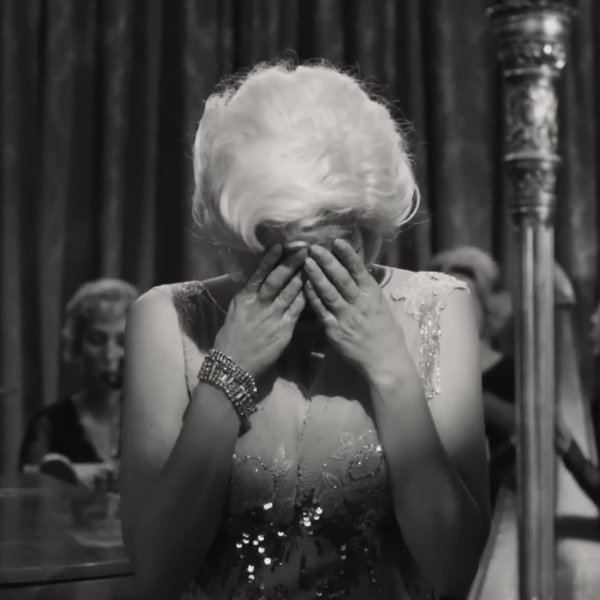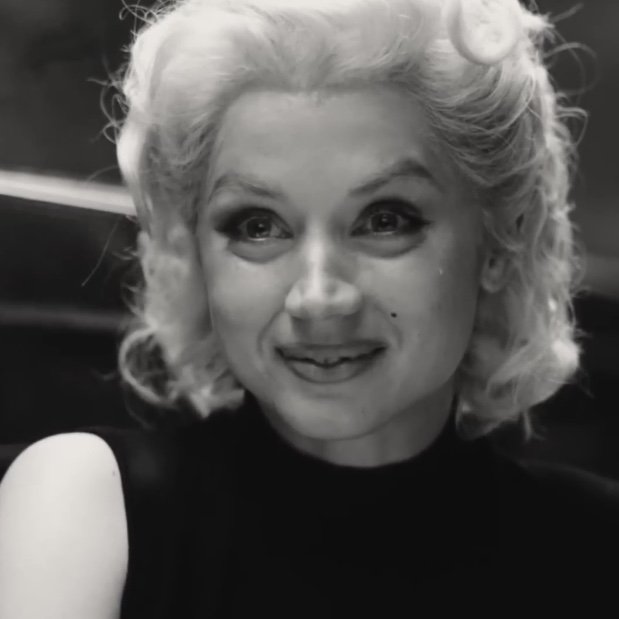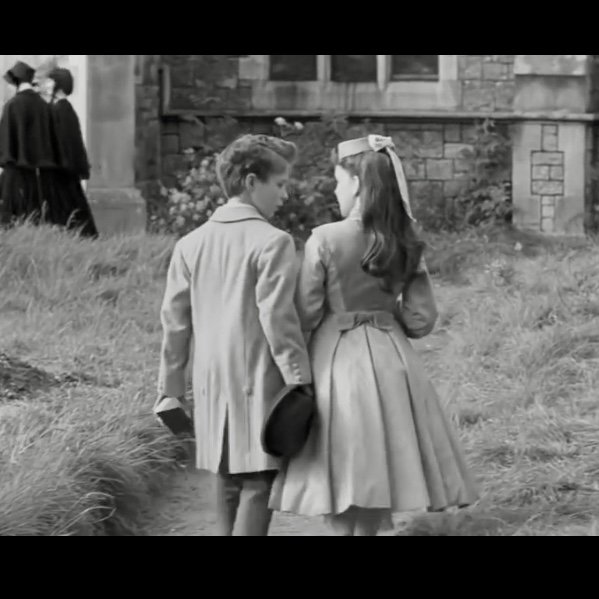Platinum Portrayal: Ana de Armas’ Golden Performance in Blonde
Disclaimer: Please note that this article about the film, Blonde, features content related to mental and emotional trauma, and other similar themes, that may be triggering for some. Reader discretion is advised.
While many reviews of Andrew Dominik’s Blonde, the 2022 film based on Joyce Carol Oates’ historical fiction novel of the same name, were rather scathing, it’s Ana de Armas’ portrayals of Norma Jeane Mortenson and Marilyn Monroe that serve as the main reason to muster up the courage to try and commit to watching the often disturbing and disjointed three-hour film.
Oddly enough, through no fault of her own, it’s de Armas’ performance that’s representative of how disjointed the film really is: simply put, she’s far better than the material that surrounds her. Here are at least five scenes from Blonde where de Armas goes from good to great, displaying a wholehearted commitment to portraying a fictional incarnation of a famous figure, as well as the daunting, almost insurmountable, challenge of playing the most famous female icon in Hollywood history.
5. Calling the Shots: After talking to her agent by phone about the glaring salary inequity between her and a much-higher-paid Jane Russell for 1953’s Gentlemen Prefer Blondes, Norma Jeane calmly questions: “And I’m playing the blonde, in Gentlemen Prefer Blondes? That’s an insult.” She remains polite, even announcing: “I’m gonna hang up now,” but a second later her agent calls her Marilyn, to which Norma Jeane angrily replies: “F*** Marilyn, she’s not here!” and slams down the receiver. de Armas gives Norma Jeane a look of stunned disbelief at what has transpired, but soon proudly smiles at her newfound confidence.
4. Pink Diamonds: de Armas is Monroe’s Lorelei Lee doppelgänger in Blonde’s recreation of the classic “Diamonds are a Girl’s Best Friend” musical number from Gentlemen Prefer Blondes. With only two days to learn the choreography, de Armas captured Monroe’s hand gestures, shoulder shrugs and slinky movements on the narrow staircase. de Armas did 21 takes, with Dominik using the 21st in the final film.
3. Audition Ambition: In the scene where a nervous Norma Jeane auditions for the role of Nell for 1952’s Don’t Bother to Knock, it’s her opportunity to show the (uninterested) male powers that be how connected she is to the character, to the material and to what it represents. Norma Jeane delivers a solid audition (complete with de Armas dropping a single tear down her left cheek), but still asks to do the reading again. de Armas conveys Norma Jeane’s longing for connection, to be heard, not just seen.
2. A Method to the Sadness: At an acting workshop, an in-depth, Method-style exercise eventually sends Norma Jeane down to the floor in hysterics. As a disheveled Norma Jeane tries to regain her composure, as if she’s been jolted awake from a nightmare, the teacher asks: “What were you thinking of?” To which she replies: “I wasn’t thinking.” She quickly tries to gather her thoughts: “Um, maybe… I was remembering?” This is one of de Armas’ strongest scenes, for its display of raw emotion offset soon thereafter by a subtle, shy smile and a loud sniffle during Norma Jeane’s responses, showing just how committed Norma Jeane was to exploring her acting craft, even after an intense reaction.
1. Mother and Child Reunion: Early in the film, a seven-year-old Norma Jeane is living in Los Angeles with her mentally and emotionally unstable mother, Gladys. After surviving in a volatile, violent environment, Norma Jeane is placed in an orphanage, while her mother is eventually institutionalized. One of de Armas’ most gut-wrenching scenes occurs when Norma Jeane sees her mother for the first time in well over 10 years. de Armas’ reaction is visceral, capturing the sadness of separation, followed by her scanning her mother’s face in confusion. Despite their deeply dysfunctional history, it’s simply a child wanting her mother.
In an interview with the SAG-AFTRA Foundation, de Armas’ theorized as to the nature of this complicated relationship: “She really wants to fix Mother. The absent father figure is a problem, but I feel like Mother is the real problem, and what she feels like she has to fix… She thought, if I can find my dad and he comes back, then my mom is gonna be okay, but because I can’t find him, if I’m very, very famous, he can find me. But really it was the mother, you can see that she is trying to fix that, to build that relationship, and it’s obviously… no reaction there, there’s nothing, there’s no feedback, they don’t recognize each other.”
Honorable Mentions: de Armas has other remarkable moments in the film. For instance: The recreation of “I Wanna Be Loved By You” from 1959’s Some Like It Hot. Norma Jeane is on set in Monroe mode, playfully and seductively lip-syncing to the track, but quickly de Armas’ face switches to reveal a devastatingly deflated Norma Jeane, who stops mid-scene, and puts her head in her hands, only to then erupt ferociously in anger over the alleged demeaning on-set gossip about her. In seconds, de Armas’ range runs the spectrum from physical embodiment to mentally distracted to emotionally enraged.
Also, Norma Jeane’s meeting with “The Playwright,” is a rare occasion that we see her calm and self-assured. She’s clearly smitten with the intellectual across the table, and she beams at the professional and personal possibilities. Their flirtatious exchange of the greeting, “Hey, you” is one of the film’s sweet, all-too-brief moments.
de Armas received several acting-award nominations in early 2023, including an Academy Award nomination for Best Performance by an Actress in a Leading Role. And while she didn’t win any golden statues, her performance is the gleam amid all the gloom.
“Secretive; Whispery; Indecent”: Intentional Disconnect in 1961’s The Innocents
More gothic folklore than gruesome gore, Jack Clayton’s beautifully haunting (and hauntingly beautiful) 1961 film, The Innocents is high-art psychological horror. Co-written by William Archibald and Truman Capote, the film is based on the 1898 Henry James story, The Turn of the Screw.
Deborah Kerr stars as Miss Giddens, a governess hired to care for two children, Flora (Pamela Franklin) and Miles (Martin Stephens), at an English manor. An unsettling tone is set right from the beginning: Behind the initial screen blackness, pre-opening credits, the sound of a young girl (Flora) singing “O Willow Waly” creates a disturbing blurred line between wholesome lullaby and its mournful lament for a lost lover. The disconnect continues through the opening credits, now with birds chirping in the darkness; those familiar tweets most often heard at daybreak, instead of in the dead of night. And finally, a profile of a distressed Miss Giddens, clutching her hands together, tilting her head back with her eyes closed, her forehead glistening with perspiration; the sight of sweat common in the blazing sunlight, not in the glowing moonlight.
Day or Fright
Throughout the crisp, black-and-white film there are a number of bone-chilling scenes. The manor and its grounds become settings for strange goings-on, ones not solely reserved for the nighttime, when fatigue, shadows and imagination can get the best of someone, but in broad daylight as well, often with others nearby. But what is real, and who is credible? In the film’s first line, a sense of doubt is immediately placed upon the viewer toward Miss Giddens, when the children’s uncle asks her during the interview for the governess position: “Do you have an imagination?” An almost embarrassed Giddens replies with a yes. As the film progresses: To believe or not to believe her, that becomes the subsequent question in the viewer’s mind.
Depth of Fear
The crisp black and white mentioned earlier is the work of the cinematographer, Freddie Francis, who used a deep-focus technique, which allows the foreground, middle ground and background to be equally sharp. One of the best examples is when Flora becomes oddly excited about nature’s brutality. She declares: “Oh look, it’s a lovely spider, and it’s eating a butterfly!” (Spiders aren’t usually described as lovely, creating another example of intentional disconnect.) The large depth of field simultaneously creates distance and claustrophobia for the viewer (a visual disconnect), while also establishing Flora as the spider to Miss Giddens as the butterfly.
Brother and Sinister
In addition to this macabre outlook on nature, mature subtexts run throughout, particularly ones dealing with the misguided affection between Miles and Miss Giddens. After learning more about two of the manor’s previous residents, Giddens begins to suspect the prim, proper, poetic Miles, and the once-sweet now emotionally hysterical, Flora are not who they appear to be, that something evil has entered the innocent (foreshadowed when Giddens admires a stone cherub in the garden, only for a cockroach to crawl out of its mouth).
Giddens conveys to Mrs. Grose, the housekeeper enveloped by extreme denial, that both children “are playing, or being made to play, some monstrous game. I can’t pretend to understand what its purpose is; I only know that it is happening: something secretive, and whispery, and indecent.” (Undoubtedly, Capote-penned prose.)
The relationship between Miles and Flora becomes suspect as well. Flora seems to have a psychic connection to Miles, knowing when Miles will return home from his school, permanently dismissed for bad behavior, even before Miss Giddens or Mrs. Grose. Giddens becomes watchful of the two siblings as they hold hands, walking closely together toward the town church. A concerned Giddens says to Mrs. Grose: “Look at them. What do you think they’re saying?… They’re talking about them; talking horrors.”
And the horrors continue through the film’s dizzying conclusion (or disturbing connection to its beginning, as described earlier), one that is both spine-tingling and heavyhearted, where the secretive becomes communicative, the whispery reaches its crescendo, the indecent once again innocent.
The Best of the Worst: Plan 9 From Outer Space
Plan 9 from Outer Space, starring Bela Lugosi, is the 1959 campiest-of-campy “spooky” movie about snippy, snarky extraterrestrials resurrecting the dead on Earth. Who they couldn’t resurrect: Lugosi himself, who had died three years earlier. The director, Ed Wood used footage of Lugosi from another project they worked on earlier together, The Vampire’s Tomb, and a Lugosi lookalike (sort of) when needed.
Que Bela!
Lugosi in brighter days, ironically: 1931’s Dracula.
Universal Pictures. Cinematographer: Karl Freund.
Tor Johnson and Vampira co-star as slow-moving zombies (28 Days Later or World War Z this is not) and needless to say spend most the movie just walking around aimlessly. It’s good ‘50s fun, and if one is looking to veg out on possibly the best worst movie ever made, this very well could be it. Alien divas and ray guns; hollow graves and hollow acting… sounds like a plan.

















